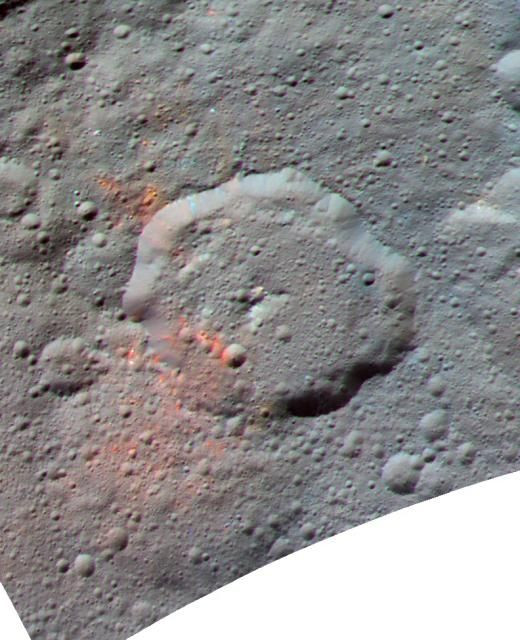Ceres' Surface Could Have Much More Organic Material Than Previously Thought

Our solar system and the bodies residing in it are full of mysteries. Be it Mars or Jupiter’s moon Europa, scientists are constantly conducting studies and working on new missions to understand the dynamics of our stellar neighborhood and find if any celestial body, apart from Earth, carries the conditions necessary for microbial life.
One such object that has drawn attention over last few years is Ceres — a dwarf planet that lurks around in the asteroid belt between the orbits of Mars and Jupiter. NASA’s Dawn space probe is already surveying the tiny planet since 2015 and has made some intriguing discoveries including the presence of water ice as well as organic material in small patches on its surface.
The agency detected carbon-based compounds which do not necessarily confirm the presence of life (non-biological processes can also produce organic molecules), but make up a crucial part of components or building blocks of life as we know it. This is why a group of researchers from Brown University once again analyzed the data collected by Dawn and came to a surprising conclusion — organic material on the planet could be much more abundant than originally thought.
When Dawn orbited the dwarf planet, it’s Visible and Infrared Spectrometer was used to see how the sunlight interacts with the object’s surface. The instrument analyzed the wavelengths of light absorbed and reflected by the surface, which allowed NASA’s team to confirm the presence of organic molecules in the Ernutet Crater located in the northern Hemisphere of Ceres.
In order to determine how abundant the material might be, the team compared the data with the reflectance of light from organic material formed on Earth and concluded the six to ten percent of spectral signature detected by Dawn could be attributed to organics.
However, when researchers from Brown University re-examined the data with a different standard — a carbonaceous meteorite containing organic matter from an asteroid — they were totally surprised.
“What we find is that if we model the Ceres data using extraterrestrial organics, which may be a more appropriate analog than those found on Earth, then we need a lot more organic matter on Ceres to explain the strength of the spectral absorption that we see there,” Hannah Kaplan, the lead author behind the work, said in a statement.
“We estimate that as much as 40 to 50 percent of the spectral signal we see on Ceres is explained by organics,” Kaplan added. “That’s a huge difference compared to the six to 10 percent previously reported based on terrestrial organic compounds.”
While this is just an estimate, if the amount of organic material on Ceres is really so abundant, there are two possible explanations for its presence. First, as the researchers noted, could be internal production which might be followed by the exposure on the surface, while the other could be the work of an organic-rich asteroid or comet crashing onto the planet.
That said, it is still unclear which of the two theories or maybe another third possible explanation will apply to this case.
“Ceres is clearly a fascinating object, and understanding the story and origin of organics in these spots and elsewhere on Ceres will likely require future missions that can analyze or return samples,” study co-author concluded.
The study titled, “New Constraints on the Abundance and Composition of Organic Matter on Ceres,” was published in Geophysical Research Letters.
© Copyright IBTimes 2025. All rights reserved.





















